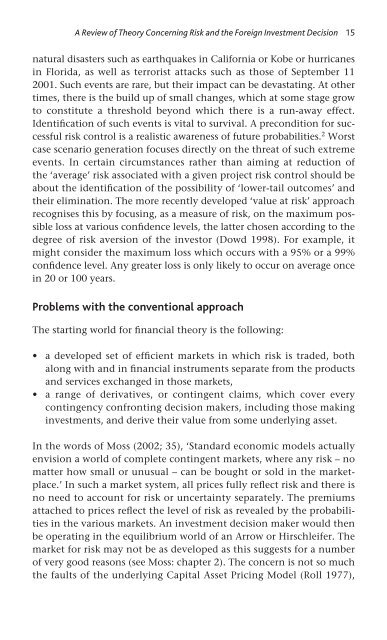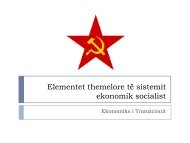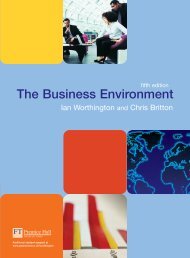Risk and Foreign Direct Investment - Index of
Risk and Foreign Direct Investment - Index of
Risk and Foreign Direct Investment - Index of
You also want an ePaper? Increase the reach of your titles
YUMPU automatically turns print PDFs into web optimized ePapers that Google loves.
A Review <strong>of</strong> Theory Concerning <strong>Risk</strong> <strong>and</strong> the <strong>Foreign</strong> <strong>Investment</strong> Decision 15<br />
natural disasters such as earthquakes in California or Kobe or hurricanes<br />
in Florida, as well as terrorist attacks such as those <strong>of</strong> September 11<br />
2001. Such events are rare, but their impact can be devastating. At other<br />
times, there is the build up <strong>of</strong> small changes, which at some stage grow<br />
to constitute a threshold beyond which there is a run-away effect.<br />
Identification <strong>of</strong> such events is vital to survival. A precondition for successful<br />
risk control is a realistic awareness <strong>of</strong> future probabilities. 2 Worst<br />
case scenario generation focuses directly on the threat <strong>of</strong> such extreme<br />
events. In certain circumstances rather than aiming at reduction <strong>of</strong><br />
the ‘average’ risk associated with a given project risk control should be<br />
about the identification <strong>of</strong> the possibility <strong>of</strong> ‘lower-tail outcomes’ <strong>and</strong><br />
their elimination. The more recently developed ‘value at risk’ approach<br />
recognises this by focusing, as a measure <strong>of</strong> risk, on the maximum possible<br />
loss at various confidence levels, the latter chosen according to the<br />
degree <strong>of</strong> risk aversion <strong>of</strong> the investor (Dowd 1998). For example, it<br />
might consider the maximum loss which occurs with a 95% or a 99%<br />
confidence level. Any greater loss is only likely to occur on average once<br />
in 20 or 100 years.<br />
Problems with the conventional approach<br />
The starting world for financial theory is the following:<br />
• a developed set <strong>of</strong> efficient markets in which risk is traded, both<br />
along with <strong>and</strong> in financial instruments separate from the products<br />
<strong>and</strong> services exchanged in those markets,<br />
• a range <strong>of</strong> derivatives, or contingent claims, which cover every<br />
contingency confronting decision makers, including those making<br />
investments, <strong>and</strong> derive their value from some underlying asset.<br />
In the words <strong>of</strong> Moss (2002; 35), ‘St<strong>and</strong>ard economic models actually<br />
envision a world <strong>of</strong> complete contingent markets, where any risk – no<br />
matter how small or unusual – can be bought or sold in the marketplace.’<br />
In such a market system, all prices fully reflect risk <strong>and</strong> there is<br />
no need to account for risk or uncertainty separately. The premiums<br />
attached to prices reflect the level <strong>of</strong> risk as revealed by the probabilities<br />
in the various markets. An investment decision maker would then<br />
be operating in the equilibrium world <strong>of</strong> an Arrow or Hirschleifer. The<br />
market for risk may not be as developed as this suggests for a number<br />
<strong>of</strong> very good reasons (see Moss: chapter 2). The concern is not so much<br />
the faults <strong>of</strong> the underlying Capital Asset Pricing Model (Roll 1977),




